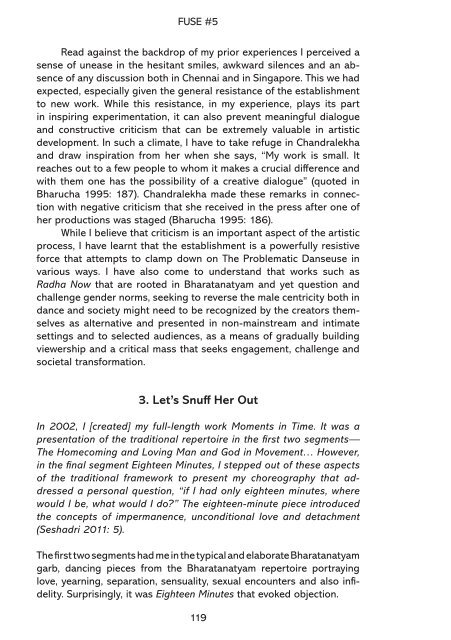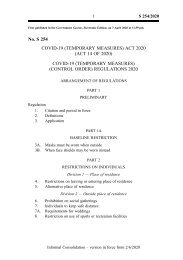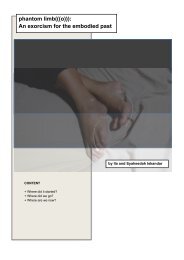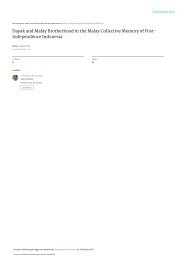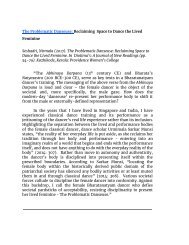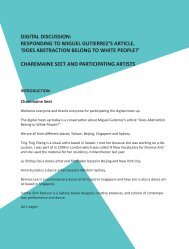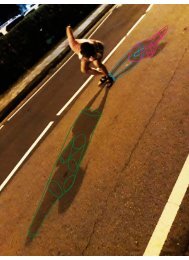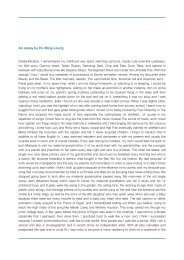FUSE#5
This edition of FUSE consists of articles contributed by artists who participated in Dance Nucleus' programmes in 2020.
This edition of FUSE consists of articles contributed by artists who participated in Dance Nucleus' programmes in 2020.
Create successful ePaper yourself
Turn your PDF publications into a flip-book with our unique Google optimized e-Paper software.
The Problematic Danseuse<br />
Narayanan, from whom I was receiving specialized training in<br />
abhinaya at the time, attended my Chennai performance. She was gracious,<br />
supportive and even came back stage before the performance<br />
to bless me. A few days later in class, she asked me, “You are so good<br />
at your classical, why do you need to present your modern work on<br />
the same stage?” (Personal communication) I had chosen to express<br />
my personal aspirations and to embrace the transience—choosing to<br />
spend my limited time on an imaginary beach, walking on the sand,<br />
reveling in my body, mind and spirit, spending precious moments<br />
with an illusory lover, bonding with a girl child and finally departing<br />
with grace and gratitude. At this point, I return to Irigaray who says: “I<br />
consider it a mistake to divide my work into parts that are foreign to<br />
one another. Its becoming is more continuous and the way it develops<br />
is close to that of a living being” (2002: 200). Narayanan’s response<br />
revealed to me that my attempt towards an integrated representation<br />
of my various facets as a dancer and as a woman was not favored.<br />
Irigaray’s concept of a “spiritual-embodied unity” is what I seek to<br />
move towards which, “in phenomenology of the body, is considered<br />
as structurally similar to the lived body” (Lehtinen 2014: 17).<br />
A few months later I was invited to perform at the NRI 23 Festival<br />
organized in Hyderabad by the Andhra Pradesh Tourism Department.<br />
I decided to present Moments In Time and sent the organizers all the<br />
required preliminary material, including a synopsis of the work and<br />
publicity images. They had raised no concerns at the time regarding<br />
the work. I had completed the first two segments following which I<br />
changed into my purple sleeveless top and black trousers and began<br />
the final piece. Twelve minutes into Eighteen Minutes, the organizers<br />
turned off my lights and sound as they felt I was performing ballet<br />
movements and my costume was indecent. The scene I was performing<br />
was one in which I was in a supine position on stage to depict<br />
the bonding between mother and child. The theme was expressed<br />
through abhinaya and not ballet, a form in which I have not trained.<br />
I had thought (somewhat naively) that as an NRI dancer, the value I<br />
would bring was the reflection of my authentic experience of living in<br />
a diasporic environment, along with my simultaneous connection to<br />
India. It was then that I understood the expected role of a non-resident<br />
Indian—to perpetuate status quo as opposed to adopting an<br />
individualistic approach.<br />
Bharatanatyam is positioned as the cultural touchstone of the<br />
diaspora for whom India represents an imagined homeland. The<br />
purity, acceptability, sacredness and link that had been drawn by the<br />
revivalists to India’s ancient history were associations that encouraged<br />
parents in diasporic locations such as Singapore to enroll their<br />
120


